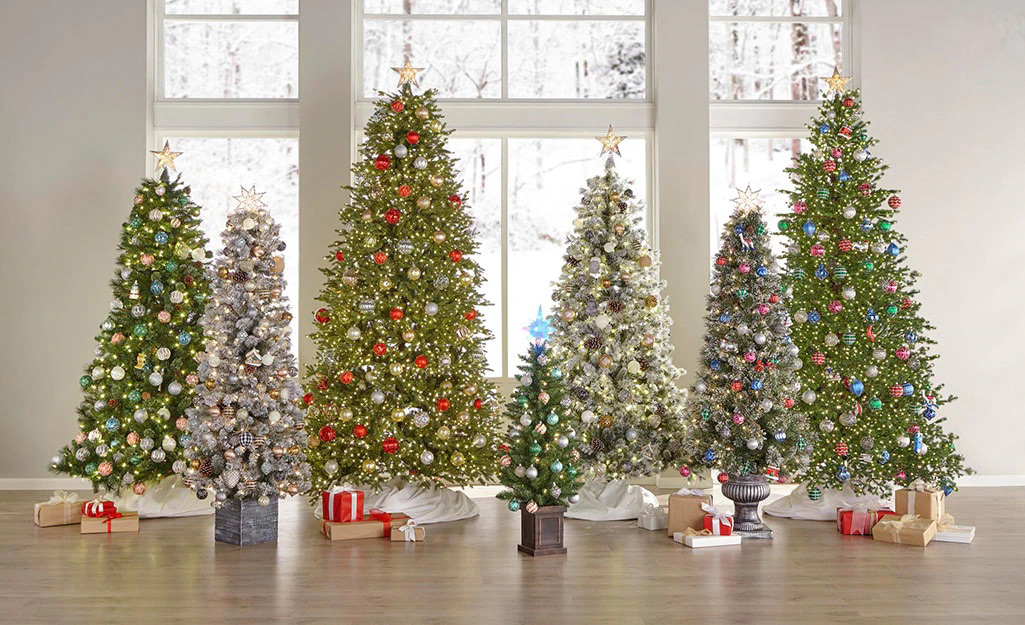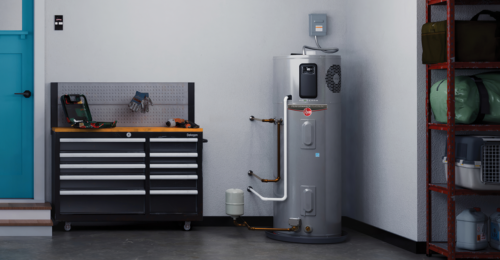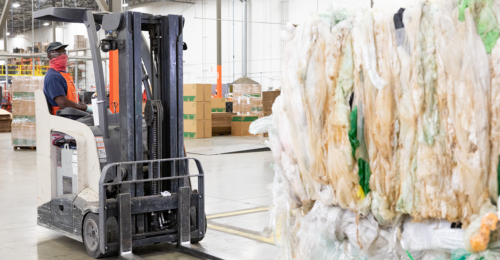For those who celebrate Christmas, the holiday season just isn’t complete without a tree. Christmas trees are the centerpiece of holiday festivities and traditions. But if you’re someone who cares about the environment, buying a tree can leave you feeling confused. On the one hand, there are live trees, which are cut and sold at your local store. On the other hand, there are artificial trees, which are reusable but are made of plastic. You may be wondering which tree is really greener. You may also be asking yourself if the type of tree you choose even matters when it comes to climate change. The answer is “yes.”
While The Home Depot sells both fresh-cut and artificial trees, neither tree is truly carbon neutral. The biggest factor when it comes to sustainability is not what you buy, but what you do with your tree when the holidays are over.
The critical step to a greener holiday tree is landfill avoidance. If you plan to recycle, mulch or compost your tree, get a live tree. If you plan on dumping your tree after the holiday, consider artificial.
The Live Tree Equation

Live Trees Are a Renewable Resource
The live Christmas trees sold at The Home Depot are not cut from wild forests. They are grown on tree farms, cultivated from seed to mature tree. As such, Christmas trees are a renewable resource. Across the U.S., there are hundreds of thousands of acres dedicated to their growth. Christmas tree farms raise and harvest different varieties of trees, virtually eliminating the harvesting of trees in the wild, which can deplete valuable forests.
Christmas tree farms, also called nurseries or plantations, combine agriculture, forestry and horticulture with the goal to cultivate, manage and sell trees. Most types of real Christmas trees take approximately seven years to reach maturity, and for every tree that is harvested, anywhere from one to three more seedlings are planted.
If your image of a tree farm on December 26th is more like a wasteland than a thinned-out forest, consider this: Of the roughly 350–500 million Christmas trees grown on farms across the U.S., approximately 30 million are cut and sold each year. The remainder of those trees are left to mature.
The Carbon Benefits of Live Trees
When it comes to carbon emissions, live trees offer several benefits. First of all, trees absorb carbon dioxide. By nature, trees release oxygen and take in carbon dioxide, thereby helping to reduce the amount of CO2 in the Earth’s atmosphere. In fact, it is estimated that forest restoration can help cut carbon emissions by 30%. For every acre of Christmas trees grown, up to one ton of carbon is sequestered.
Proper Disposal Makes All the Difference
But what about the actual net carbon footprint of Christmas trees? After all, doesn’t the annual shopping, growing and transport add up? Yes, it does. An independent life cycle assessment conducted in 2008 by Canadian environmental consulting firm ellipsos, inc. determined the carbon footprint of a live tree to be 3.1 kgs, or 6.8 lbs, per year when it’s composted, mulched or recycled. However, that number goes up substantially to over 35 lbs per tree per year when those trees end up breaking down or rotting in a landfill.
If you plan to celebrate with a live tree this year, make a plan to dispose of your tree sustainably. The key is to recycle, mulch or compost your tree. It makes all the difference.
Recycling, Composting or Mulching Live Trees
Recycling programs located in most communities turn your used tree into useful mulch. Many of our locations offer Christmas tree recycling free of charge. Call your local store to find out if they are participating. In some areas, recycled trees are also being used to create habitats for fish and other aquatic life in local ponds and lakes, as well as helping to slow erosion.
The Artificial Tree Equation
 The Reusable Advantage
The Reusable Advantage
In comparison to the 30 million live trees sold across the U.S. each year, about 10 million artificial trees are sold. Even though most tree lovers dislike the idea of cutting down a live tree, many prefer a live tree to one made of plastic and metal for obvious reasons. But artificial trees do have their advantages, including convenience, long-term cost benefits and reduced allergies.
When it comes to sustainability, the primary benefit of an artificial tree is reusability. Every year that an artificial tree is pulled from the attic or basement and reused, shoppers can avoid a trip to the store, thereby reducing emissions. Given that the average life span of an artificial tree is six years, thus cutting out the same number of trips.
The Carbon Footprint of Artificial Trees
The two biggest factors working against artificial trees are the carbon emissions associated with manufacturing and shipping. Most artificial trees sold in the U.S. are made in China, shipped from factory to port and transported overseas via container ship. Once in the U.S., they take a reverse journey from port to store via truck.
According to the independent ellipsos life cycle assessment, the carbon footprint of an artificial tree is 8.1 kgs, or 17.8 lbs, per year. This is again based on the average six-year life span of most artificial trees and the above manufacturing and transportation costs. By using an artificial tree for 10 years or longer, you can substantially reduce your holiday carbon footprint.
The Greenest Tree is a Recycled Tree
Whether you choose a live tree or an artificial tree, the biggest decision you can make is to recycle that tree. The longer it stays out of the landfill, the greener it will be. If you have an artificial tree, this may mean that you meticulously and intentionally disassemble it after the holiday in hopes of stretching out its life. If you celebrate with a live tree, make a plan to skip the dump, by way of recycling, mulching or composting your holiday tree. Happy holidays!






